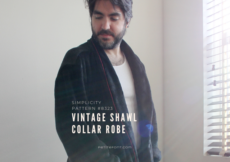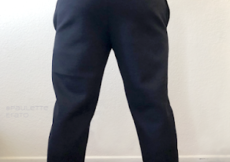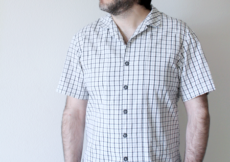Finlayson has a Nordic heritage so it’s no wonder that the Thread Theory Finlayson sweater is a cozy garment. It’s perfect for protecting against those cold winters.
Thread Theory is one of the few menswear-focused pattern companies around. Hailing from Canada, they aren’t exclusively menswear pattern makers, they definitely have the niche on lock. I’ve posted about El Hubo’s chocolate Finlayson before. Well, when my father saw it, he wanted one for himself, too! In brown, no less.
Since I didn’t fully review the pattern last time, let’s do so now, yes?
Thread Theory Finlayson Sweater
 My favorite part of the Finlayson sweater description is that Thread Theory calls it a grown up hoodie! Read on:
My favorite part of the Finlayson sweater description is that Thread Theory calls it a grown up hoodie! Read on:
This sweater is a grown up version of the classic hoodie. It will be a wardrobe staple due to its cozy boxy shape and hard wearing cuffed hems but there is no worry of looking like a slob while wearing it!
There are two versions: a shawl collar with cuffs, or an actual hoodie with a kangaroo pocket. Of course, you can mix and match options, as I did for Ryan’s first one (shawl collar with the pocket).
Size Chart
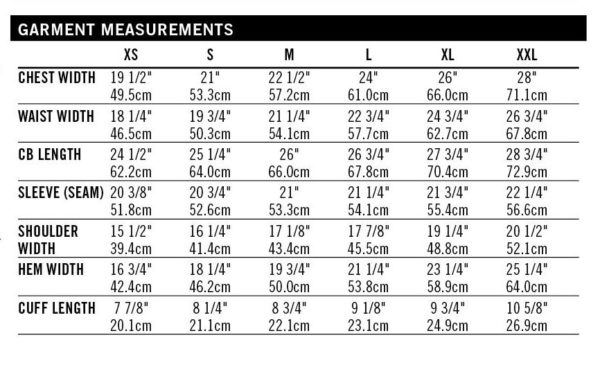 The size range based on the chest is 30-52″ (76-132 cm). My father is slightly narrower in the chest than my husband, so I recut a size medium for his 40″ chest.
The size range based on the chest is 30-52″ (76-132 cm). My father is slightly narrower in the chest than my husband, so I recut a size medium for his 40″ chest.
Something to note is the sleeve length. I ended up needing to take out 2″ for Ryan and should have done a total of 4″ on my dad’s. Suffice to say the sleeves run long.
Fabric
The recommended fabric is a medium weight knit or fleece. A stretch percentage isn’t specified but they do note that if the body fabric is more stable, then the cuffs should be made from ribbing or more stretchy fabric. In case that isn’t possible, there is a longer cuff piece included.
I have made this both in low-stretch fleece and a mid-weight sweater knit. It worked well both times.
This particular chocolate sweater knit was bought on my Vancouver shopping trip at Atex Designer Fabrics for about $7/meter.
PDF Criteria
Here is how the PDF stacks up
- Layered sizes: no
- Colored lines by size: no
- No trim pattern: no
- Prints to edge of paper: no
- Print layout included: no
- A0 available: yes
There is no print layout of this pattern. I didn’t realize this the last time I made it, but that was a huge surprise to me this time around. Because there are 2 versions of the pattern, you don’t need certain pieces (like the 2 hoods if you’re making the shawl collar, which take up 4 additional sheets of paper). This is a huge oversight on their part. I really wish pattern designers were a bit more mindful of the potential for wasted ink and paper.
But so you don’t make the same mistake as me, here’s a printing tip I recently learned:
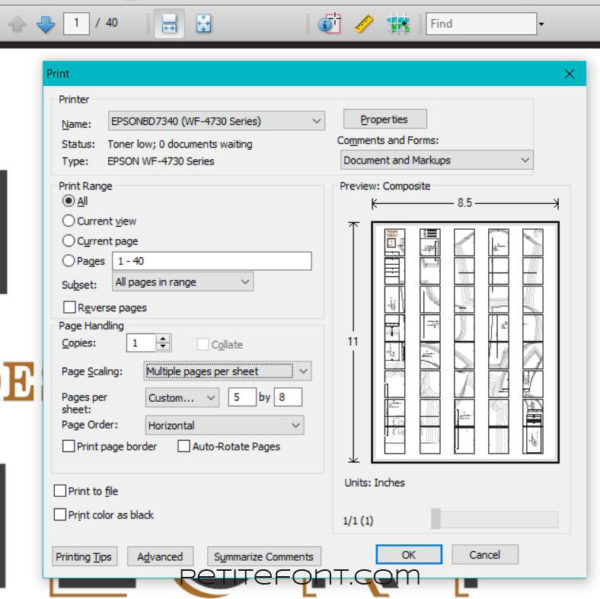
- choose “Multiple pages per sheet” under the Page Scaling options
- For pages per sheet, use a layout that makes sense. Since this pattern has 40 pages with 5 columns, I used a 5×8 grid.
It’s not the same as having a layout included in the pattern. And the pages won’t be numbered—you’ll have to do that yourself. But it’s a good cheat for a pattern with about 40 or fewer pages. Any more than that and the printout will have to be split between multiple pages, or be too small to be of any use.
Pattern Instructions
The instructions are otherwise excellent and very friendly for newer sewists. Each step is illustrated with a clear line drawing.
Pattern Notions
1/2″ twill tape is offered as a finishing technique for the collar seam as well as the pocket. This is optional and I didn’t use it either time. But you should stabilize the shoulders, either with twill tape or some other method.
Pattern Adjustments
The nice thing about sewing for the men in my life is that they rarely need any pattern adjustments. But as I mentioned above, the sleeves do run long. My father requested I shorten his sleeves another 2″ for a total of 4″ off the length.
Final Thoughts

Like I mentioned last time, every time I see this sweater I want to make one for myself! I don’t know why I haven’t already (other than it’s already hot here in Los Angeles). It does live up to its “cozy” description.
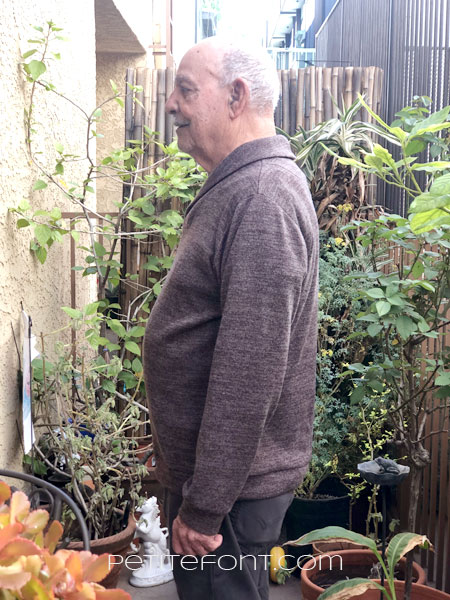
Another cool feature is that especially the shawl version makes this the type of sweater that can be dressed up or down, depending on the fabric and pants pairing. In this chocolate sweater knit, it would be equally well suited for either a nice pair of slacks or jeans (as seen here).
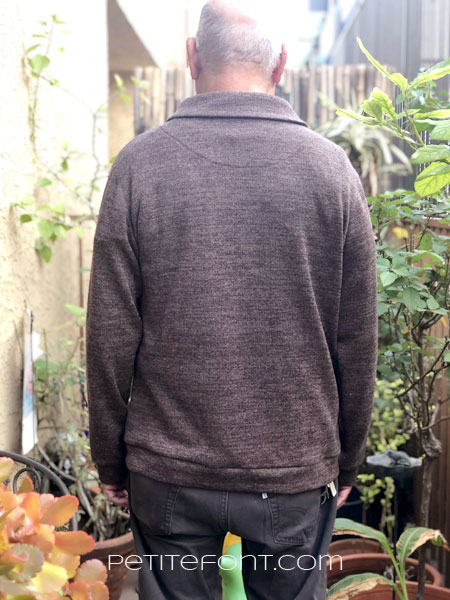
Other than it lacking a pattern layout, I think this is an excellent and surprisingly easy-to-make pattern. I haven’t branched out to other Thread Theory patterns just yet, have you? What do you think of their aesthetic?



